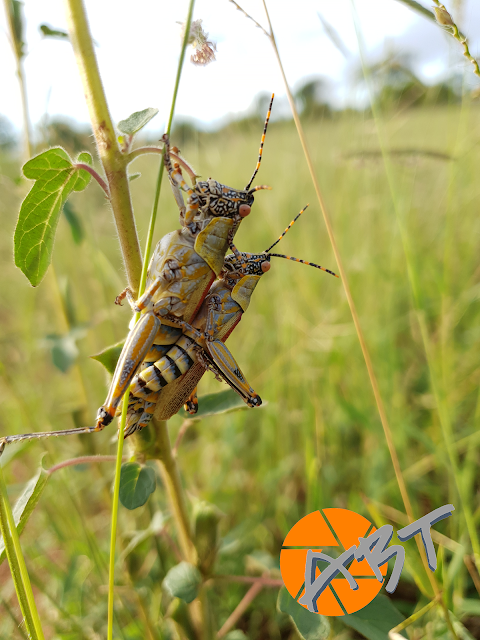Exploring grasshoppers with ABT #CritterThursday
When you think about it, there are about a million described species of insects in the world, "more than five times the number of all animals combined," according to emeritus professor Jerry Powell in his book, California Insects.
To many townsfolk, the only exposure they will have to grasshoppers or locusts are those TV images of some macho bushman eating them in an attempt at 'survival'. To rural folk, they are a traditional form of nutritious food.
Grasshoppers have two antennae, 6 legs, two pairs of wings and small little pinchers to tear off food such as grasses, leaves and cereal crops.
Grasshoppers are controlled in nature by predators such as birds, frogs, and snakes. Humans use insecticides and poison baits to control them when they become crop pests.
Elegant Grasshopper
The Elegant Grasshopper is native to Africa, and they'll eat just about anything planted in the garden , although they prefer herbs to grasses. Its distribution is restricted to the southern parts of Africa, and this includes Madagascar. They breed once a year and males mature first, but their mating attempts are rejected until females become receptive , femals are usually larger than males. They can jump about 25cm high and around 1 meter long.
If humans could jump as far as grasshoppers do, relative to size, then we could leap more than the length of a football field.The grasshopper can jump as far as it does because its hind legs act like miniature catapults. It bends its legs at the knee, mechanism within the knee works like a spring, storing up energy. When the grasshopper is ready to jump, it relaxes the leg muscles, allowing the spring to release flinging it into the air.
Enjoyed these facts ? You're welcome to share.




Comments
Post a Comment